[= Leiopus (Leiopus) linnei Wallin, Nýlander & Kvamme, 2009]
Subfamilia: LAMIINAE / Tribus: ACANTHOCININI
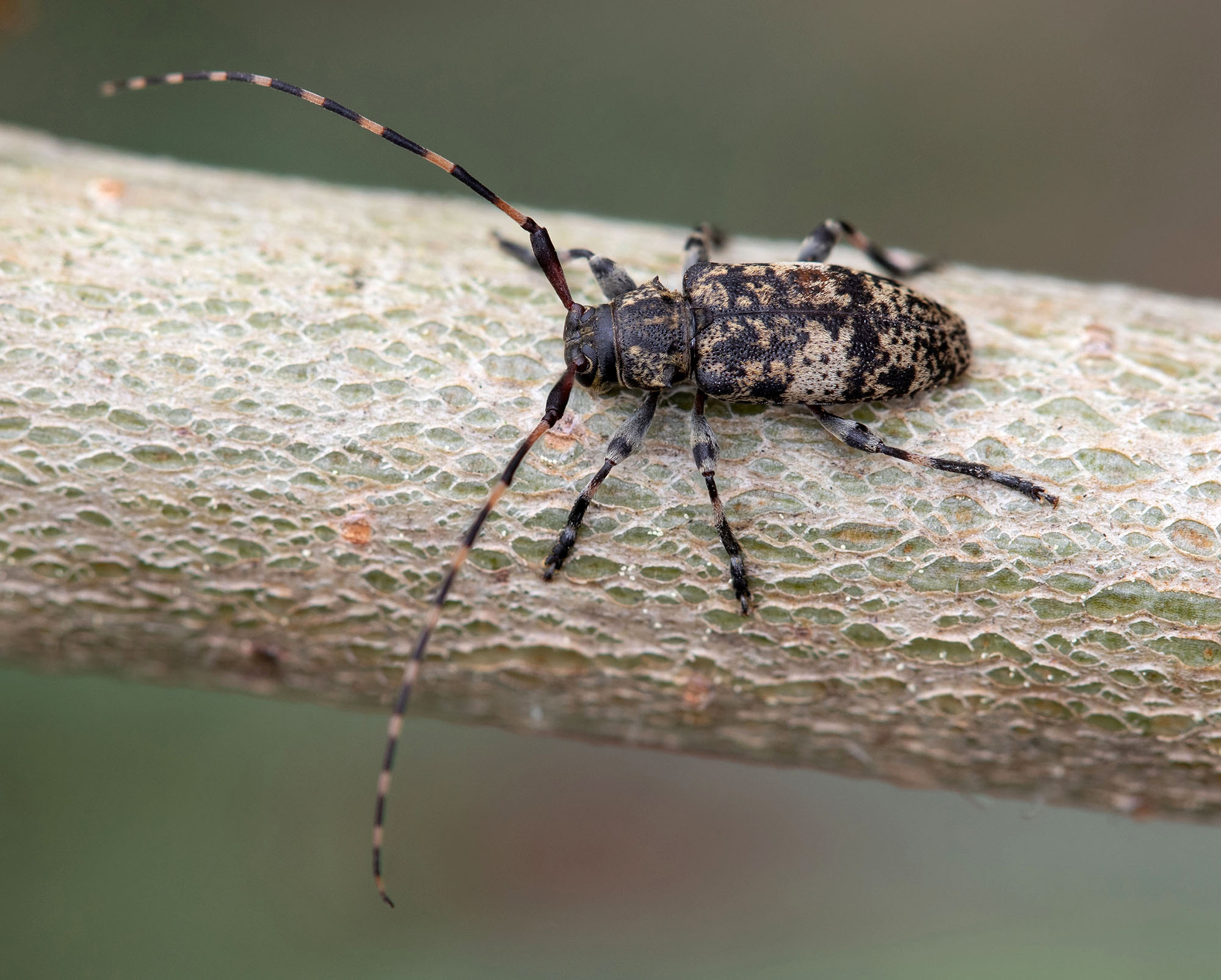
[Photo © Daniel Rydzi]
Leiopus taeniatus was originally described from Siberia as Cerambyx taeniatus by Johann Friedrich Gmelin in 1790. This name was considered synonymous with Leiopus nebulosus (Linnaeus, 1758) and was completely forgotten for a long time. In 2009, however, Henrik Wallin, Ulf Nylander, and Torstein Kvamme described a new species, Leiopus linnei, which is a sibling species in Europe to the well-known and highly variable Leiopus nebulosus (Linnaeus, 1758). According to Mikhail L. Danilevsky and Gérard L. Tavakilian [2022; ✳], the description and distribution range of L. taeniatus correspond to those of the taxon L. linnei, therefore Leiopus linnei is a synonym of Leiopus taeniatus.
Both species differ in combination of characters, including the male genitalia and female spermathecae. Leiopus taeniatus appears to be common in Central Europe lowlands and is here also probably more anbundant then L. nebulosus, which is predominantly recorded from coastal areas of Europe. The biology of the species is the same as that of the L. nebulosus [❄].
L. taeniatus and L. nebulosus are very similar morphologically and their identification is difficult and possible only by experienced taxonomists. For this reason, a supporting determination method these two species based on hind wings measurements was developed and published by Robert Rossa, Jakub Goczał and Adam Tofilski in 2017 [✧] (as Leiopus linnei). Integrative approaches for precise identification and range delimitation of the three most common european Leiopus species were published by Andrii M. Zamoroka in 2025 [✱].
Body length: ♂♂ 5.0–9.2 mm / ♀♀ 6.4–9.5 mm Life cycle: 1 - 2 years Adults in: May - July Host plant: polyphagous in deciduous trees (Fagus, Quercus, Carpinus, Juglans, Acer, Ulmus, Betula, Salix, Prunus) Distribution: Austria, Bulgaria, Croatia, Czechia, Denmark, France, Great Britain, Germany, Macedonia, Norway, Poland, Romania, Slovakia, Slovenia, Switzerland, Ukraine, Kazakhstan, Russia (West Siberia)
The depicted beetles were collected (DR - May 2, 2020) or reared (MP/ML - winter 2021) from larva found in a dead oak (Quercus sp.) in Křivoklátsko Protected Landscape Area (Central Bohemia, Czechia).Collected by Daniel Rydzi and Miroslav Polcar
[✮]
Gmelin J.F.:
Caroli a Linné Systema Naturæ per Regna tria Naturae, secundum Classes, Ordines, Genera, Species, cum characteribus, differentiis, synonymis, locis. Classis V. Insecta.
Editio 13. Lipsiae, Georg Emanuel Beer 1 (4) : 1517-2224, 1790 [download]
[✳]
Danilevsky M.L., Tavakilian G.:
Additions and corrections to the Catalogue of Palaearctic Coleoptera, vol. 6/1, 2020. Revised and Updated Second Edition. Chrysomeloidea I (Vesperidae, Disteniidae, Cerambycidae). Part II.
Humanity space - International Almanac 11 (2): 107-171, 2022 [download]
[❖]
Wallin H., Nylander U., Kvamme T.:
Two sibling species of Leiopus Audinet-Serville, 1835 (Coleoptera: Cerambycidae) from Europe: L. nebulosus (Linnaeus, 1758) and L. linnei sp. nov.
Zootaxa 2010: 31-45, 2009. [download]
[✧]
Rossa R., Goczał J., Tofilski A.:
Hind wing morphology facilitates discrimination between two sibling species: Leiopus nebulosus and L. linnei (Coleoptera: Cerambycidae).
Zootaxa 4227 (2): 266-278, 2017. [download]
[✱]
Zamoroka A.M.:
Integrative approaches for precise identification and range delimitation of the three most common european Leiopus species (CC).
Zoodiversity 59 (1): 45–68, 2025. [download]
[❄]
Sláma M.E.F.:
Tesaříkovití – Cerambycidae České republiky a Slovenské republiky / Cerambycidae of the Czech Republic and Slovak Republic.
Milan Sláma private printing, Krhanice, 383pp [pages 302-303], 1998 [ISBN: 80-238-2627-1]. [download]
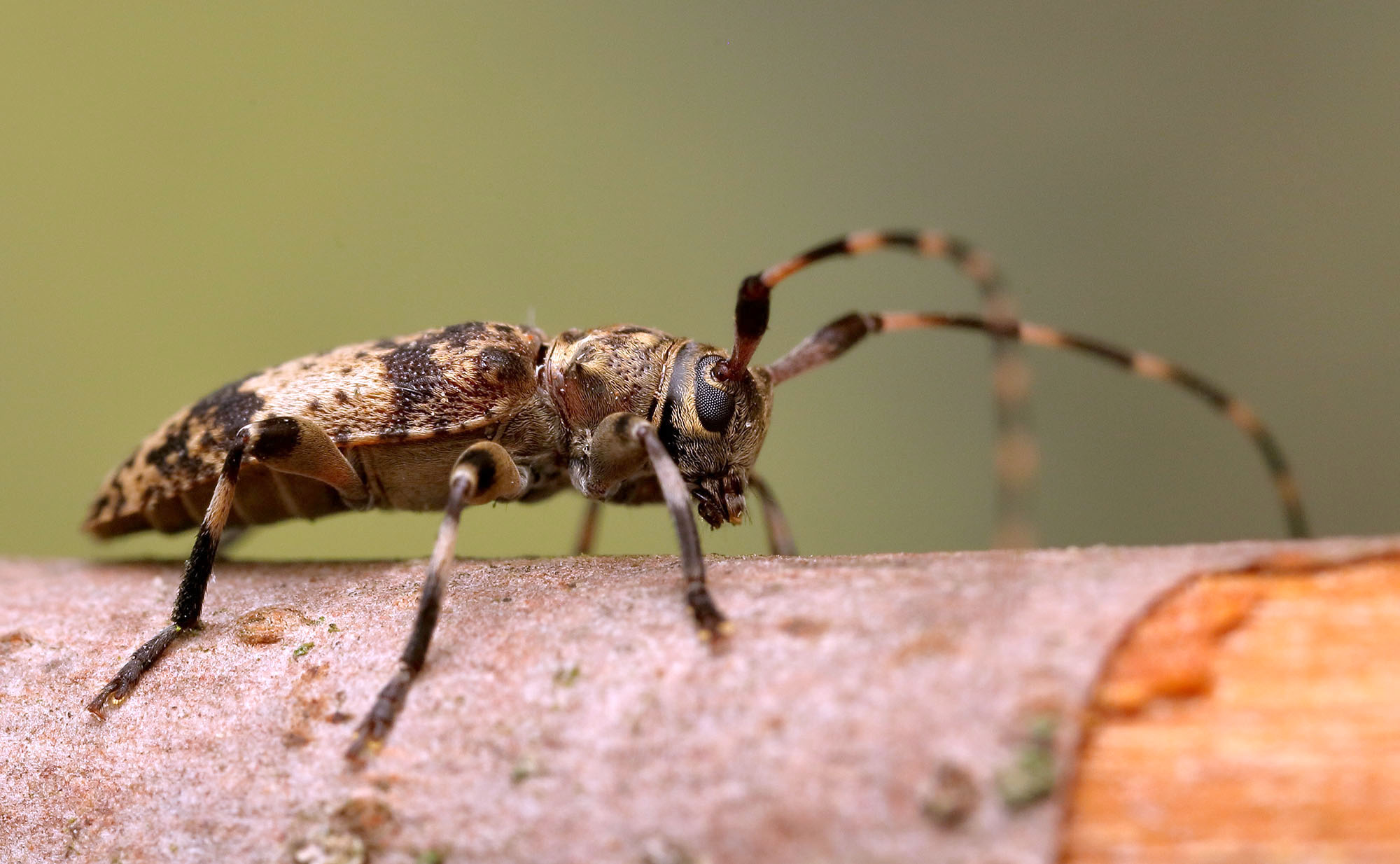
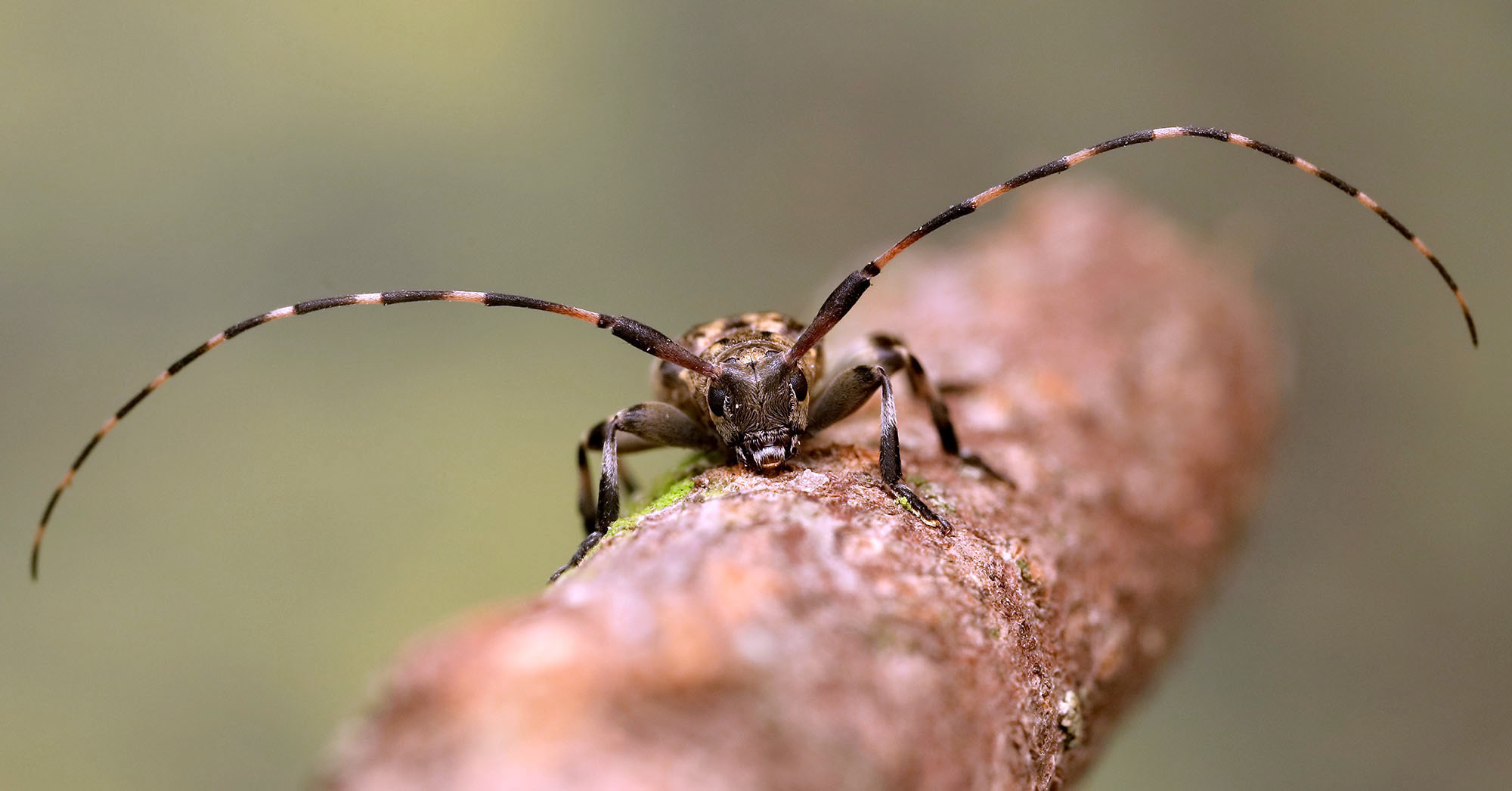
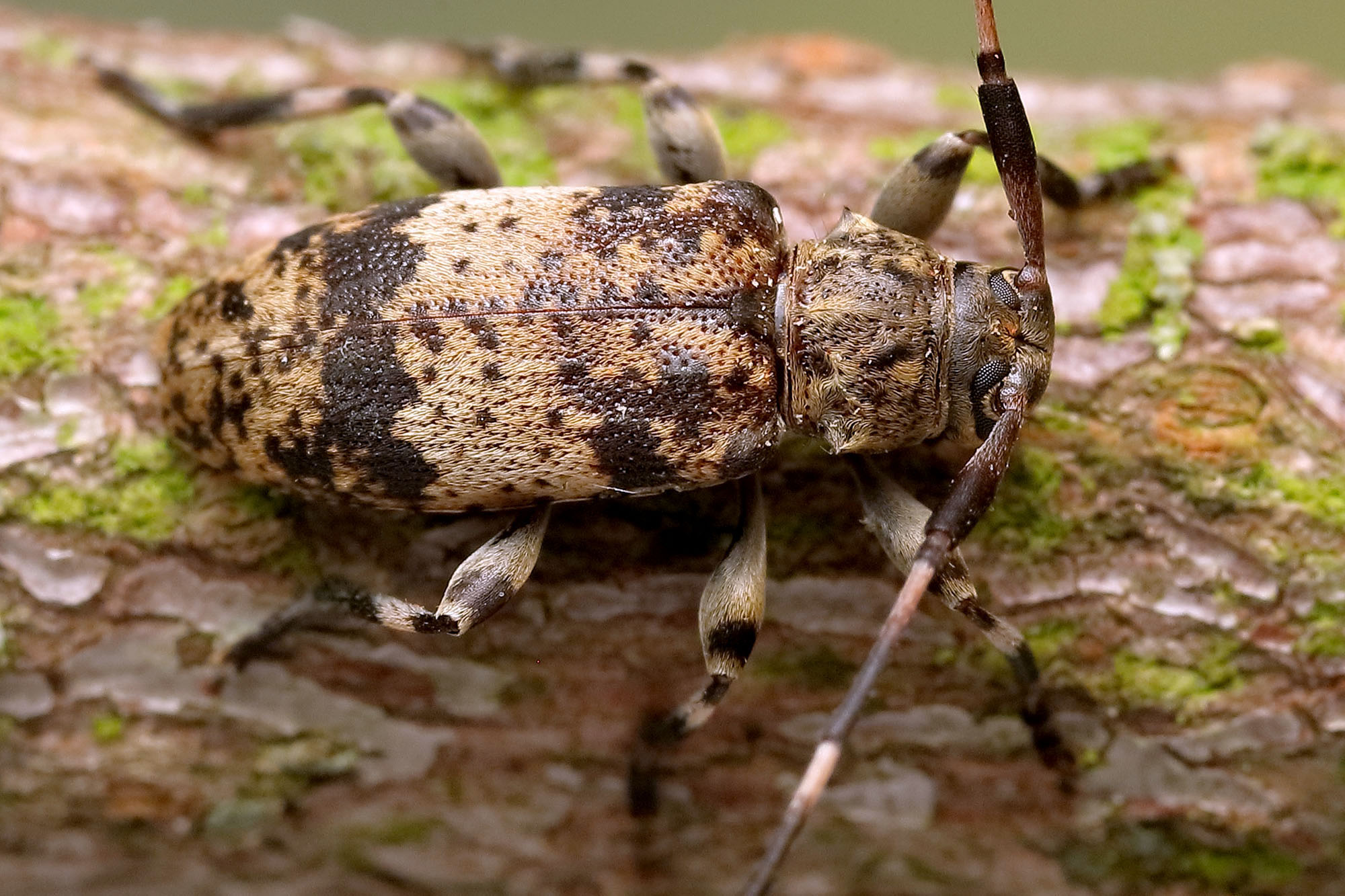
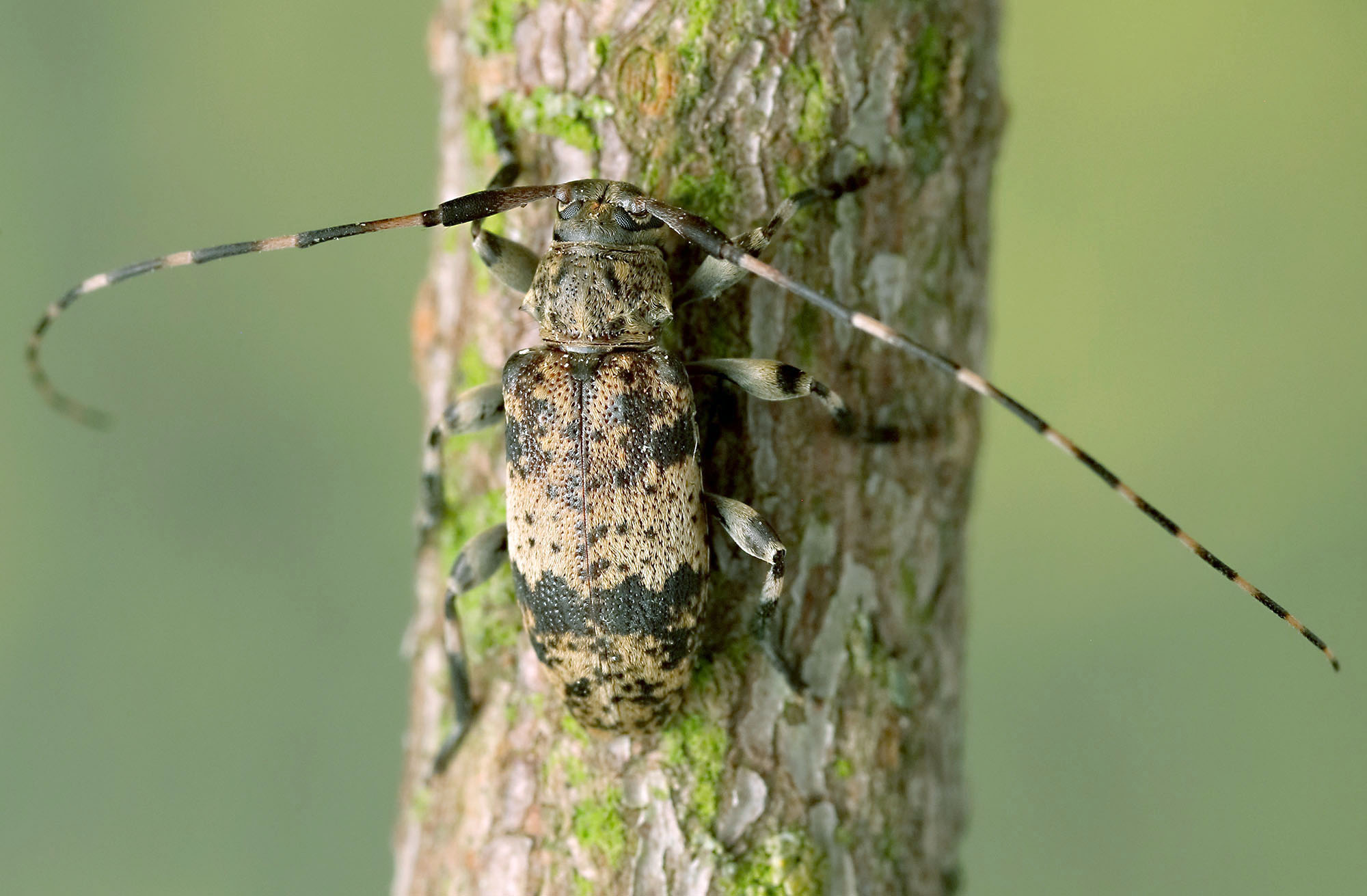
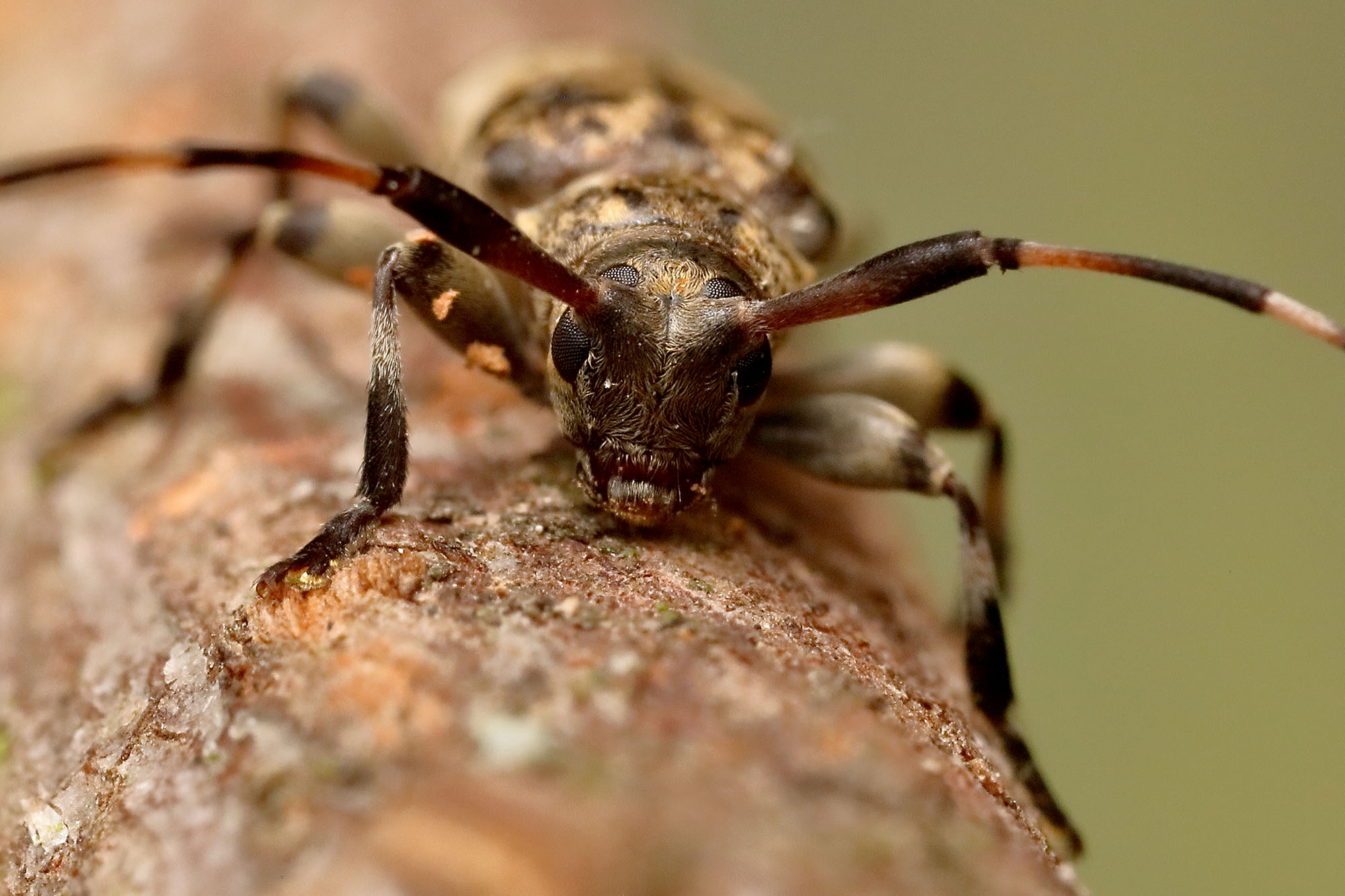
[Photo © Milan Lovětínský]
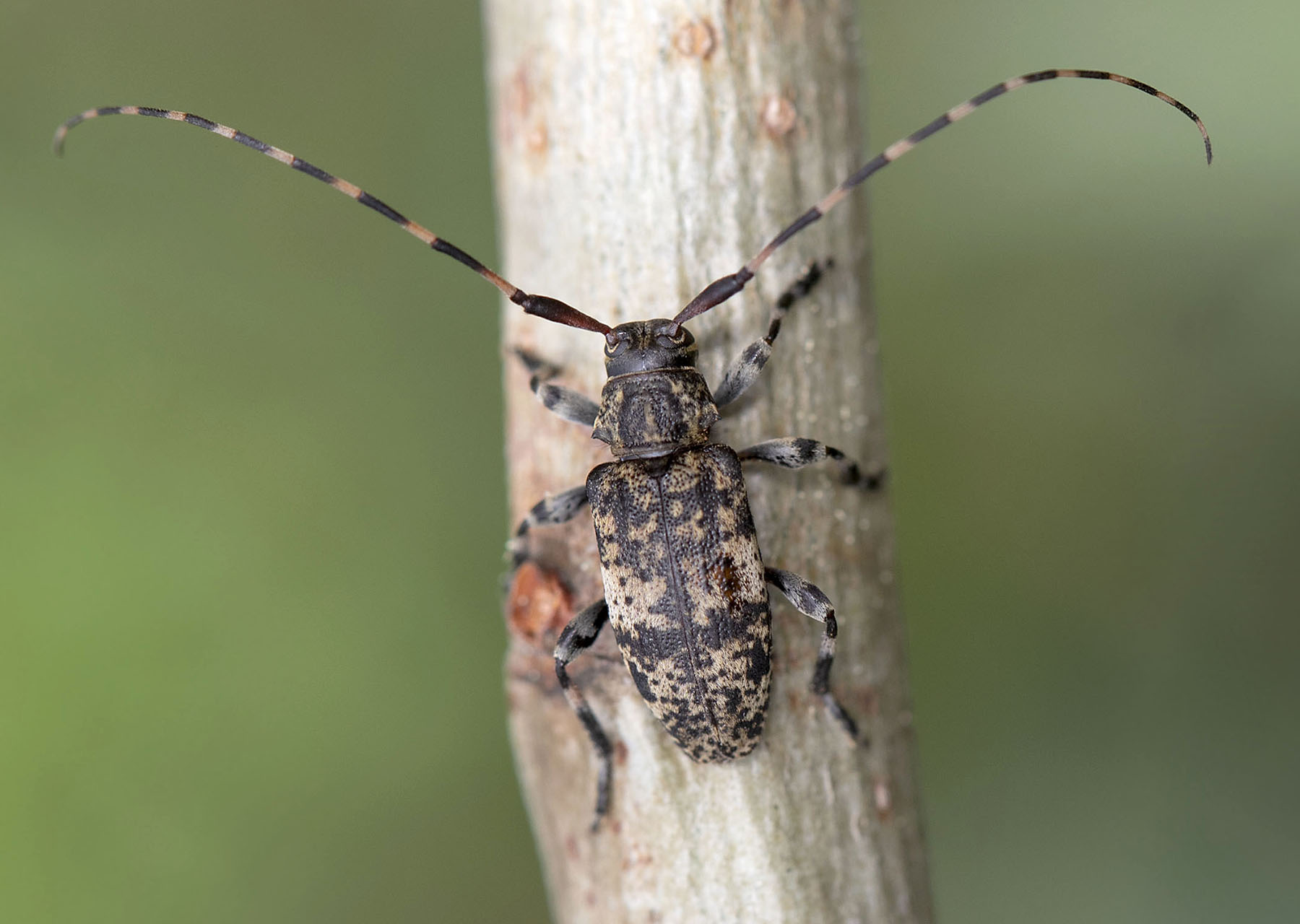
[Photo © Daniel Rydzi]
| Subfamilia | Lamiinae Latreille, 1825 |
| Tribus | Acanthocinini Blanchard, 1845 |
| Genus | Leiopus Audinet-Serville, 1835 |
| Subgenus | Leiopus Audinet-Serville, 1835 |
| Species | Leiopus (Leiopus) taeniatus (Gmelin, 1790) |
